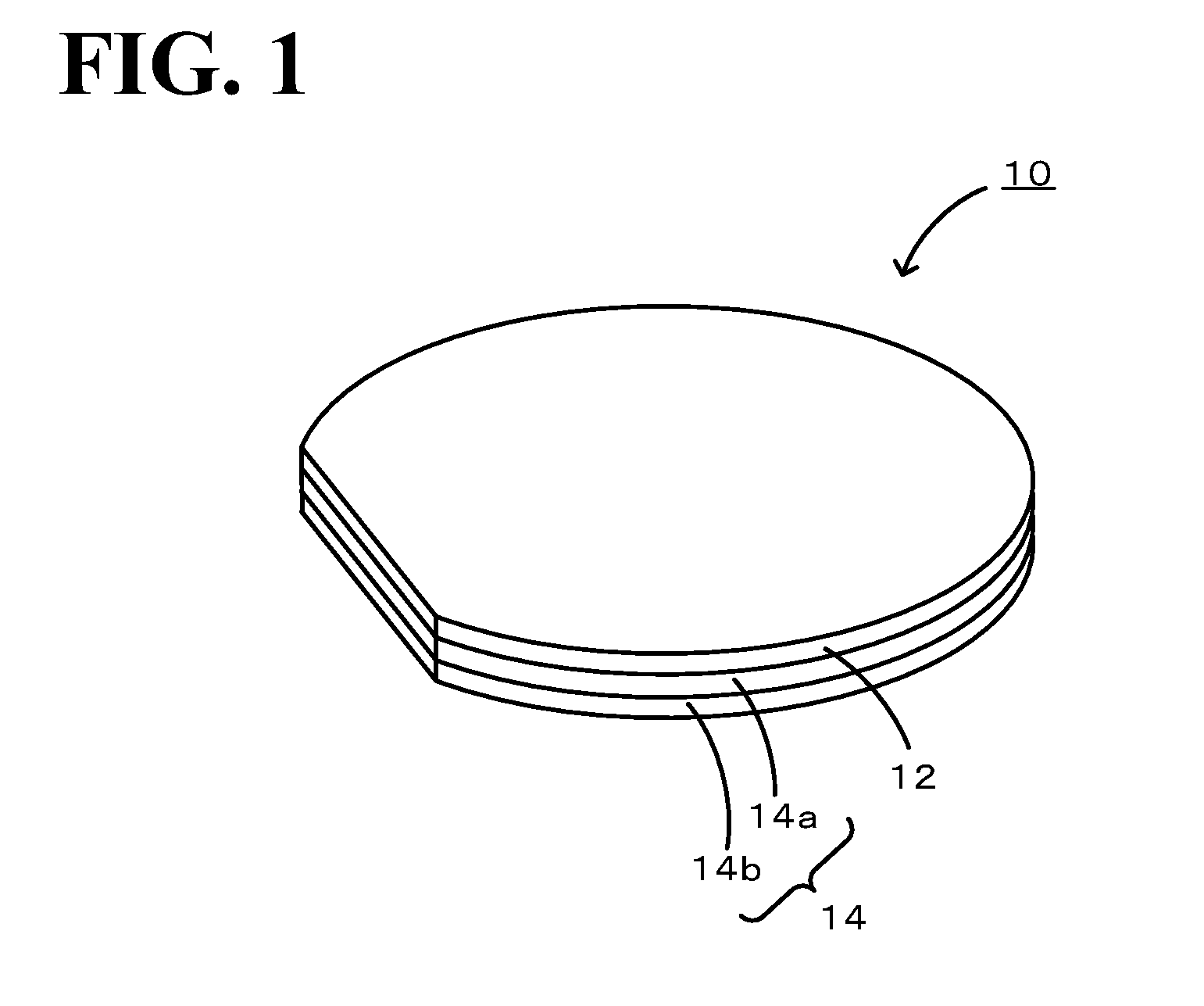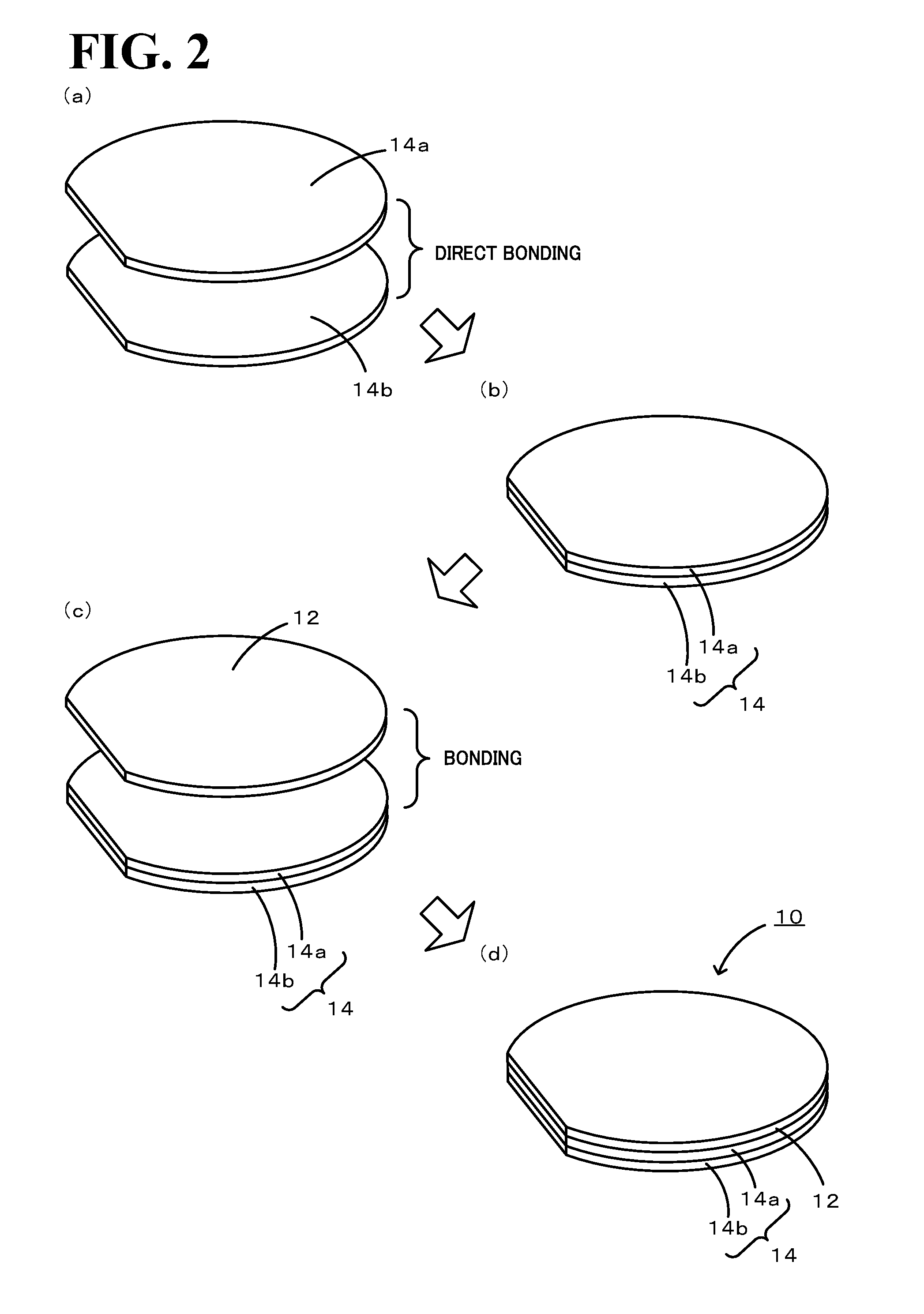Composite Substrate, Elastic Wave Device, and Method for Producing Elastic Wave Device
a technology of elastic wave and composite substrate, which is applied in the direction of generator/motor, transportation and packaging, other domestic articles, etc., can solve the problems of low commercial value, increase in the cost of elastic wave device, and high cost of polishing, so as to reduce warpage of composite substrate in response to temperature changes, increase the strength of composite substrate, and increase the thickness
- Summary
- Abstract
- Description
- Claims
- Application Information
AI Technical Summary
Benefits of technology
Problems solved by technology
Method used
Image
Examples
example 1
[0040]Two silicon substrates having a diameter of 100 mm and a thickness of 250 μm were prepared as first and second substrates. Each silicon substrate prepared had two mirror-finished surfaces. Each silicon substrate was washed to remove foreign matter from the surfaces and subsequently introduced into a vacuum chamber formed of stainless steel. The atmosphere within the chamber was adjusted to a vacuum on the order of 1×10−6 Pa. Within this atmosphere, a surface of each silicon substrate was irradiated with Ar ion beams for 180 sec. Subsequently, the beam-irradiated surfaces of the silicon substrates were overlapped so as to be in contact with each other and a load of 500 kgf was then applied to bond together the silicon substrates. Thus, a support substrate having a total thickness of 500 μm was obtained. In addition to this support substrate, a LT substrate having two mirror-finished surfaces, a diameter of 100 mm, and a thickness of 230 μm was prepared as a piezoelectric substr...
example 2
[0045]The polished composite substrate in Example 1 was subjected to patterning for electrodes for elastic wave devices (surface acoustic wave devices). A blade was then inserted into the Si—Si bonding boundary to divide the bonded substrate. This provided a bilayer composite substrate in which the LT substrate and the Si substrate (first substrate) were bonded together and a monolayer Si substrate (second substrate). The separated surface of the bilayer composite substrate and the separated surface of the monolayer Si substrate were observed with an AFM (atomic force microscope). As a result, the wafers were found to have a surface roughness Ra of about 0.4 nm and the surfaces were in a good condition without the need of polishing. The separated surfaces were subjected to elemental analysis by energy dispersive X-ray spectrometry (EDS). As a result, in addition to the Si element, the Fe element and the Cr element were detected. The Fe element and the Cr element were derived from th...
PUM
| Property | Measurement | Unit |
|---|---|---|
| thickness | aaaaa | aaaaa |
| thickness | aaaaa | aaaaa |
| thickness | aaaaa | aaaaa |
Abstract
Description
Claims
Application Information
 Login to View More
Login to View More - R&D
- Intellectual Property
- Life Sciences
- Materials
- Tech Scout
- Unparalleled Data Quality
- Higher Quality Content
- 60% Fewer Hallucinations
Browse by: Latest US Patents, China's latest patents, Technical Efficacy Thesaurus, Application Domain, Technology Topic, Popular Technical Reports.
© 2025 PatSnap. All rights reserved.Legal|Privacy policy|Modern Slavery Act Transparency Statement|Sitemap|About US| Contact US: help@patsnap.com



